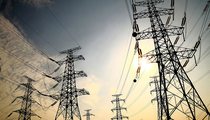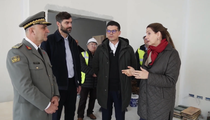Why are new nuclear projects still too expensive in Europe?

Nuclear power is poised to play a crucial role in Europe's decarbonisation and energy security efforts, but the financial and logistical challenges of building new reactors remain massive. High construction costs, financial risks and reliance on state support make such projects a daunting challenge for most service providers in Europe, according to a report by S&P Global Ratings.
"New European nuclear construction is expensive, risky and will require significant funding," the report warns, citing the extraordinary costs of modern nuclear construction. The overnight cost of new reactors built in Europe, which excludes financing during construction, exceeds 10 million euros per megawatt.
For a typical pair of European pressurized reactors, this translates into an investment of up to 50 billion euros, an amount far beyond the financial capacity of most European utilities, with the exception of EDF. The cost of building new nuclear projects in Europe "is also about five times the largest offshore wind farm project in the Organization for Economic Co-operation and Development," the report said.
The financial strain to build new nuclear projects is illustrated by the experience of EDF, as the French energy giant simultaneously managed the construction of two large-scale projects, Hinkley Point C in the United Kingdom and Flamanville in France. Cost overruns and delays in these projects eroded EDF's credit rating and underscored "increased execution and unforeseen risks" inherent in nuclear projects, according to the report.
For European utilities, the high capital costs of nuclear construction "typically stretch corporate balance sheets" and require long-term revenue guarantees to ensure financial stability, warns S&P Global. Despite the high costs, nuclear power offers distinct advantages, especially in the context of Europe's energy crisis following Russia's invasion of Ukraine. While the EU was heavily dependent on Russian gas before 2022, uranium, the feedstock for nuclear power, comes from a more stable and diverse supply base, reducing geopolitical vulnerabilities.
Nuclear plants also produce sustainable, low-carbon electricity, providing steady output to balance the outage of renewables like wind and solar. The European Union relies on nuclear power for about 20% of its electricity production and 15% of its power capacity.
As the report notes: "new construction projects are essential in Europe to maintain the share of nuclear at around 20% in the energy mix and to complement the growing share of renewables." The European Parliament's classification of nuclear as a "green" technology under the EU's Taxonomy of Sustainable Activities strengthens its investment appeal by facilitating access to sustainable financing.
With the average reactor in Europe now 40 years old, many plants are scheduled to be decommissioned by 2040. Timely replacement of these reactors is essential to avoid a shortfall in electricity supply, especially when energy demand increases. Electrification of industries and increasing data center power needs estimated to increase grid demand by 10-15 terawatt-hours per year make the case even stronger for sustainable and decarbonized electricity sources such as nuclear ones.
The high cost of nuclear construction requires strong state involvement. No European company can currently undertake such projects without government-backed mechanisms, the report notes, adding that "all current financing mechanisms envisaged for new nuclear builds involve strong taxpayer or consumer support".
These mechanisms include subsidized government loans, regulated asset base (RAB) models and contracts for difference (CfDs), which help spread costs and mitigate financial risks. Examples of state-backed nuclear projects abound. In the Czech Republic, the government has partnered with Korea's KHNP to develop new reactors, including Dukovany 5, with financing facilitated through state mechanisms.
Similarly, Poland's ambitious plans for up to six reactors, backed by state loans and intergovernmental financing, aim to bolster its energy independence and decarbonisation targets. In Slovakia, a newly completed reactor, Mochovce 3, began operation in late 2023, adding to the country's nuclear capacity. In France, EDF plans to commission between six and 14 new reactors, with a capacity of 10-24 gigawatts, by the end of the 2030s. However, no final investment decisions have been made, and the lack of clear financing plans underlines future challenges.

Balluku inspects the works in Lot 7 of the Great Ring Road of Tirana, where the laying of asphalt layers has started!
The laying of asphalt layers in lot 7 of the Great Ring Road of Tirana begins. With a length of nearly 2 kilometers, this lot is expected to be ready in a......

Which EU countries have the most foreign-controlled enterprises?
Foreign-controlled companies have a significant impact on the EU economy, even though they account for only 1% of all market producers. Despite their small......

Italy, Russia's top trading partner in the EU - Trade between Rome and the Kremlin grew by almost 20% in September 2024
Italy became Russia's top trading partner among EU countries in September 2024, overtaking Germany, which had led the ranking for six months. These data come......

Mazniku in the Special Anticorruption Commission: The registration of municipal properties should be facilitated
The Minister of State for Local Government, in his speech at the Special Anticorruption Commission, emphasized the work that needs to be done to facilitate......

Fewer loans for new businesses - According to the Bank of Albania, the loan stock is decreasing
Individuals and businesses have begun to take less and less loans to open a new business. The latest data from the Bank of Albania show that the total loan......

"Property legalization, the 2028 deadline is achievable" - Rama: Help from technology. Russia: Only 2.9% of requests, reviewed
The deadlines for completing the processes related to the legalization of properties are within reach, according to Prime Minister Edi Rama. During the......

November 28-29, Albanians "travel" - Zani: The numerous days off and cheap flights affected
With the arrival of the holidays on November 28 and 29, many individuals, mainly from the administration, choose to spend the holidays abroad. Four days of......

Insurance companies pay 7 billion ALL in damages - AMF: Record increase in damages paid for the Green Card
The value of gross paid claims at the end of ten months has reached 7 billion ALL, almost 23% more than in the period January - October 2023, while most of......





















